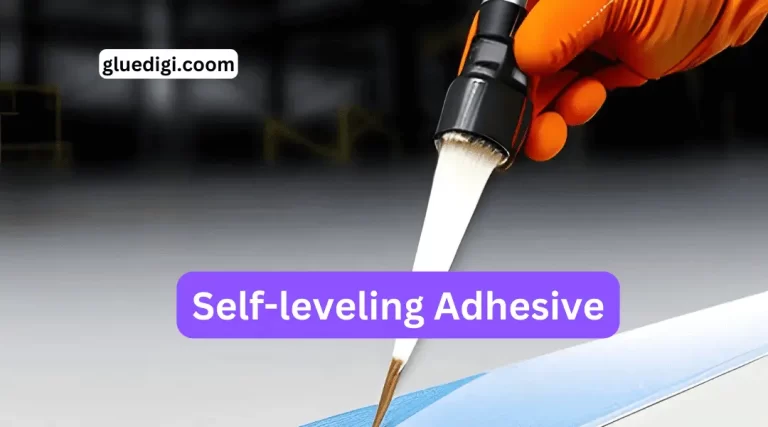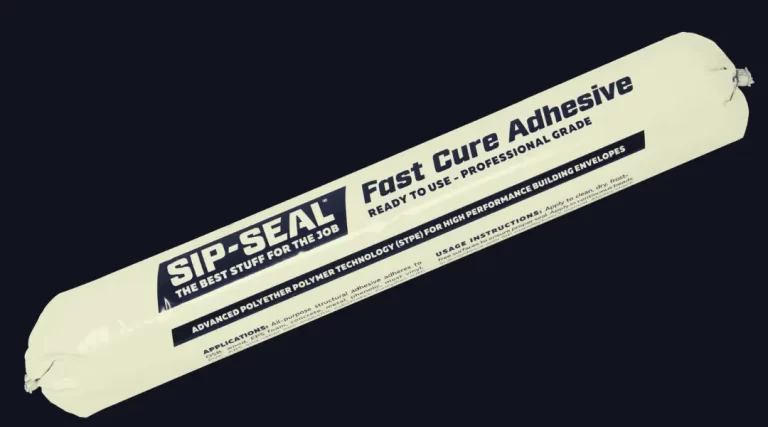Introduction to Industrial Adhesive
Welcome to the world of industrial adhesives – the unsung heroes of modern manufacturing and construction! Industrial adhesives, also known as engineering adhesives, play a crucial role in bonding diverse materials, ranging from metals and plastics to composites and ceramics. These remarkable substances provide a strong and durable connection, eliminating the need for traditional mechanical fasteners like screws and rivets.
Let’s dive into this peculiar topic and uncover the taste, health risks, and even unique uses of glue beyond its intended purpose.
So, what exactly is industrial adhesive? In simple terms, it’s a type of glue or bonding agent specifically designed for industrial applications. The main advantage of industrial adhesives lies in their ability to create robust and seamless bonds between materials, even dissimilar ones, leading to enhanced product performance and aesthetics.
Understanding the Types of Industrial Adhesives
To truly grasp the versatility of industrial adhesives, let’s explore the various types available.
1. Epoxy Adhesives
Epoxy adhesives are renowned for their outstanding bonding strength and chemical resistance. They consist of two components – a resin and a hardener – that must be mixed together just before application. Once cured, epoxies form an incredibly durable bond, making them suitable for heavy-duty applications like aircraft components and structural repairs.
2. Cyanoacrylate Adhesives (Super Glue)
Cyanoacrylate adhesives, commonly known as super glue, are known for their instant bonding capabilities. They are ideal for bonding small parts and materials like rubber, metal, and plastic. Super glues provide quick fixes and are a staple in many households and workshops.
3. Polyurethane Adhesives
Polyurethane adhesives are prized for their flexibility and excellent resistance to impact and vibrations. They are commonly used in the automotive industry, especially for panel bonding and windshield installations.
4. Acrylic Adhesives
Acrylic adhesives are known for their fast curing times and high transparency. They are widely used in the electronics industry, particularly for bonding display screens and touchscreen devices.
5. Silicone Adhesives
Silicone adhesives excel in their ability to withstand extreme temperatures and environmental conditions. Their excellent sealing properties make them ideal for use in aerospace, automotive, and construction applications.
6. Rubber-Based Adhesives
Rubber-based adhesives are designed for bonding materials with high flexibility, such as rubber, leather, and certain plastics. They find extensive use in footwear manufacturing and automotive applications.
Applications and Uses of Industrial Adhesives
Now that we have an overview of the different types of industrial adhesives, let’s dive into their wide-ranging applications across various industries.
Automotive Industry
In the automotive sector, industrial adhesives revolutionized vehicle assembly and design. They are extensively used in:
- Structural Bonding: Bonding automotive panels and components, reducing the overall weight of the vehicle while maintaining structural integrity.
- Interior Assembly: Fixing interior trims, upholstery, and dashboards, providing a smooth and aesthetically pleasing finish.
- Windshield Installation: Securely bonding windshields to the vehicle frame, enhancing safety and preventing water leakage.
Aerospace and Aviation
In the aerospace and aviation industries, every ounce of weight saved can significantly impact fuel efficiency and performance. Industrial adhesives find their application in:
- Composite Bonding: Joining lightweight composite materials used in aircraft construction, ensuring strength without adding extra weight.
- Interior and Exterior Applications: Bonding interior components, as well as critical external parts like wings and stabilizers.
Construction and Infrastructure
In construction, industrial adhesives have revolutionized the way buildings are designed and assembled. Their uses include:
- Concrete Bonding: Enhancing the bonding strength of concrete and masonry structures, leading to more durable and stable constructions.
- Tile Adhesion: Fixing tiles in flooring and wall applications, providing a neat and long-lasting finish.
Electronics and Electrical Components
In the electronics industry, precision and reliability are paramount. Industrial adhesives are employed in:
- Printed Circuit Board (PCB) Assembly: Fixing delicate electronic components to PCBs, ensuring electrical connectivity and stability.
- Semiconductor Packaging: Sealing and bonding semiconductor chips within their packages, protecting them from external factors.
Medical Devices and Healthcare
Industrial adhesives have transformed medical device manufacturing, enabling non-invasive and safer treatments. They are used in:
- Medical Device Assembly: Bonding various medical components, such as catheters and syringes, ensuring sterile and effective medical devices.
- Wound Dressings: Creating adhesive dressings and tapes that stick securely to the skin without causing irritation.
Woodworking and Furniture Manufacturing
In the woodworking industry, industrial adhesives have replaced traditional joinery methods, allowing for more intricate designs and smoother finishes. They are utilized in:
- Furniture Assembly: Bonding wooden parts to create sturdy and aesthetically pleasing furniture pieces.
- Cabinet Making: Securing cabinet doors and drawers, ensuring smooth operation and longevity.
Pros of Using Industrial Adhesives
Industrial adhesives offer a plethora of advantages that have made them indispensable in various industries. Let’s explore some of the key pros:
Enhanced Bonding Strength
Industrial adhesives form bonds that distribute stress evenly across the joint, resulting in improved load-bearing capacity. Unlike mechanical fasteners that create stress concentrations, adhesives provide a more uniform distribution of forces.
Versatility and Compatibility with Various Materials
One of the greatest advantages of industrial adhesives is their ability to bond dissimilar materials effectively. They can join metals to plastics, composites to ceramics, and much more, widening the scope of design possibilities.
Elimination of Mechanical Fasteners
By eliminating the need for screws, nuts, and bolts, industrial adhesives streamline assembly processes, reduce labor costs, and offer a cleaner appearance with no visible fasteners.
Even Stress Distribution
When materials are bonded using adhesives, stress is evenly distributed across the entire joint. This results in reduced stress concentrations and minimizes the risk of localized failures.
Improved Aesthetics
Industrial adhesives enable seamless bonding with no visible fasteners, enhancing the overall aesthetics of products and structures.
Cons and Limitations of Industrial Adhesives
Despite their many advantages, industrial adhesives also have some limitations and drawbacks that must be considered:
Limited Heat Resistance in Some Types
Certain industrial adhesives may not withstand high temperatures, limiting their use in applications exposed to extreme heat.
Environmental Impact and Sustainability Concerns
While advances have been made in developing eco-friendly adhesives, some industrial adhesives can still have environmental impacts. Proper disposal and waste management are crucial to minimize their footprint.
Longer Curing Time for Certain Adhesives
Some adhesives require longer curing times, which can slow down production processes in time-sensitive projects.
Difficulty in Disassembly and Repair
Unlike mechanical fasteners, disassembling bonded parts can be challenging and may result in damage to the materials.
Sensitivity to Surface Preparation
Achieving optimal bonding requires proper surface preparation, which can be time-consuming and critical to the success of the adhesive bond.
How to Use Industrial Adhesives Effectively
To make the most of industrial adhesives, following best practices in their application is essential. Let’s explore some key guidelines:
Surface Preparation and Cleaning
Before applying industrial adhesives, it’s crucial to ensure that the surfaces to be bonded are clean and free from dust, grease, or contaminants. Proper surface preparation will lead to better adhesion and bonding strength.
Proper Adhesive Application Techniques
Each type of industrial adhesive requires specific application techniques. Following the manufacturer’s instructions and guidelines will help achieve optimal results.
Understanding Bonding Requirements
Different applications demand different adhesive properties, such as flexibility, tensile strength, and temperature resistance. Understanding the bonding requirements will help in selecting the right adhesive for the job.
Safety Precautions and Protective Gear
Industrial adhesives can contain chemicals that may be harmful. Using proper personal protective equipment (PPE) and working in well-ventilated areas is essential to ensure safety.
Tips and Tricks for Optimal Bonding
To become an adhesive pro, consider these practical tips and tricks for achieving the best bond:
Temperature and Humidity Considerations
Certain adhesives may require specific temperature and humidity conditions for optimal curing. Be aware of the environmental factors that could affect the adhesive’s performance.
Mixing Adhesives (if Applicable)
For two-part adhesives like epoxy, ensure that the components are mixed thoroughly and in the correct ratio to achieve the desired bond strength.
Joint Design for Maximum Strength
Designing joints with the right geometry and bonding area can significantly enhance the strength and durability of the adhesive bond.
Storage and Shelf Life Guidelines
Properly storing adhesives and adhering to their shelf life will ensure that they perform at their best when needed.
Handling Adhesive Curing Issues
In case of any curing problems, such as incomplete curing or extended curing times, consult the manufacturer’s technical support for troubleshooting.
Troubleshooting Common Adhesive Problems
Even with the best practices, adhesive challenges may still arise. Let’s explore solutions to some common issues:
Poor Adhesion
- Check surface cleanliness and preparation.
- Ensure the adhesive is suitable for the materials being bonded.
- Verify the adhesive’s shelf life and expiration date.
Excessive Adhesive Bleed
- Avoid using excessive amounts of adhesive.
- Adjust the application technique to achieve a uniform bond line.
Brittle Bond Lines
- Consider using adhesives with higher flexibility and elongation properties.
- Evaluate joint design to minimize stress concentrations.
Adhesive Failure in Extreme Conditions
- Opt for adhesives specifically formulated for the anticipated operating conditions.
- Ensure proper surface preparation to enhance adhesion.
Dealing with Adhesive Residues
- Use compatible solvents or adhesive removers to clean excess adhesive.
- Follow safety guidelines when handling solvents.
Case Studies: Successful Industrial Adhesive Applications
To demonstrate the real-world impact of industrial adhesives, let’s explore some success stories:
1. Lightweight Aircraft Construction
Aircraft manufacturers embraced industrial adhesives to join lightweight composite materials, reducing overall weight and improving fuel efficiency. The Boeing 787 Dreamliner, for instance, employs adhesives to bond its composite fuselage, contributing to its impressive fuel economy.
2. Automotive Body Panel Bonding
Automakers adopted industrial adhesives for bonding body panels, replacing traditional spot welding. This shift not only reduced weight but also improved structural integrity and crash performance.
Conclusion
Industrial adhesives have become an indispensable force in diverse industries, providing robust bonding solutions that enhance product performance and aesthetics. From automotive lightweighting to aerospace advancements, the applications are limitless. While industrial adhesives offer numerous benefits, it’s essential to consider their limitations and follow best practices for optimal results.
With the right knowledge and techniques, mastering industrial adhesives unlocks a world of possibilities for innovative design and construction. So, whether you’re assembling a high-tech aircraft or fixing household items, industrial adhesives are the secret to creating strong, durable, and efficient bonds. Embrace the adhesive revolution and embark on your adhesive journey today!





